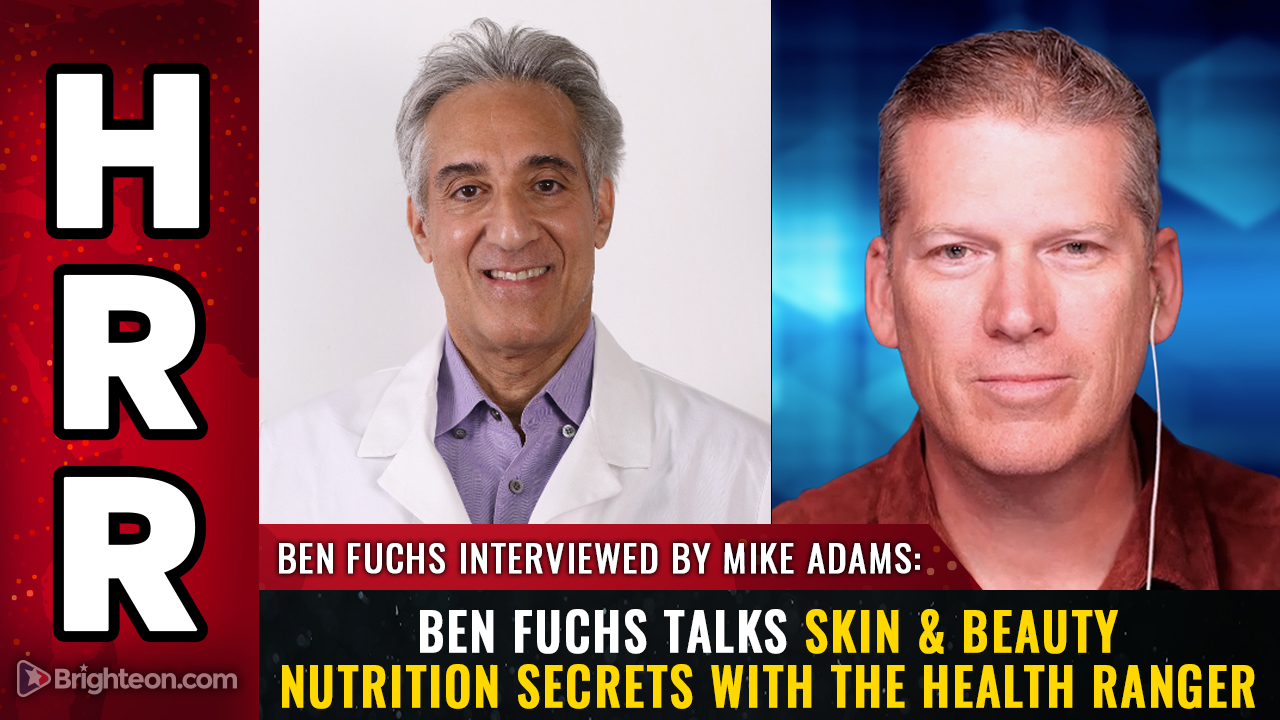Ralph W. Moss explains why America is losing the war on cancer in his book “The Cancer Industry”
05/27/2025 / By Kevin Hughes

- Declared by President Nixon in 1971, the “war on cancer” campaign promised a cure by 1976 but has since spent billions with little progress. Cancer rates and deaths remain high, with 40 percent of Americans likely to face a diagnosis.
- Ralph Moss’ book “The Cancer Industry” exposes systemic flaws, including a focus on profit-driven conventional treatments (chemotherapy, radiation) while suppressing alternative therapies.
- Institutions like the NCI and American Cancer Society have historically dismissed or attacked alternative medicine (e.g., laetrile). Moss was fired for exposing Sloan-Kettering’s cover-up of laetrile’s potential benefits.
- Growing advocacy and evidence have led to incremental change, including the creation of the NIH’s Office of Alternative Medicine (1991) and reduced hostility toward unconventional therapies.
- Moss argues that monopolistic practices, pharmaceutical profits and regulatory barriers (e.g., FDA) hinder progress. The book urges a shift toward patient-centered, innovative treatments to transform cancer into a manageable condition.
In 1971, President Richard Nixon boldly declared a “war on cancer,” vowing to find a cure by 1976. This ambitious proclamation was met with widespread hope and optimism, as the federal government and private organizations, including the American Cancer Society, collectively invested billions of dollars into cancer research. However, as humanity approach the 21st century, the elusive cure remains out of reach, and the statistics are sobering.
In 1996 alone, approximately 1.4 million Americans were diagnosed with cancer, not including the 800,000 cases of superficial skin cancer. That same year, an estimated 554,740 Americans succumbed to the disease. The age-adjusted death rate has risen from 143 per 100,000 in 1930 to 172 in 1992. Disturbingly, 40 percent of all Americans will face a life-threatening cancer diagnosis at some point in their lives. These figures are not just statistics; they represent the lives of individuals, families and communities grappling with the devastating impact of cancer.
The question that looms large is: Why, after decades of research and billions of dollars in funding, are we losing the war on cancer? Ralph W. Moss’ groundbreaking book, “The Cancer Industry,” offers a compelling explanation. Moss argues that the very structure of the cancer industry is fundamentally flawed, with a narrow focus on conventional treatments like chemotherapy, radiation and surgery, while alternative approaches are often dismissed, suppressed or even persecuted.
As a former science writer at Memorial Sloan-Kettering Cancer Center in the 1970s, Moss was fired for opposing the center’s cover-up of positive data on the drug laetrile. This incident, detailed in his book, underscores the tension between the established cancer industry and those who challenge its orthodoxy.
The book is not merely a critique but a call for systemic change. Moss contends that the cancer industry is entrenched in a system that prioritizes profit and prestige over patient welfare and scientific innovation. For instance, the FDA has never approved any non-toxic agents as cancer treatments, and the National Cancer Institute (NCI) has never conducted a fair study of alternative therapies. This has led to the persecution of alternative doctors, such as Dr. Stanislaw Burzynski, who faced indictment for providing his antineoplastons to cancer patients.
But there has been a noticeable shift in public perception since around 1992. The federal government has begun to reconsider its stance, and media interest in alternative medicine has surged. Even the American Cancer Society has stopped distributing its notorious “unproven methods” sheets.
This shift is a response to the growing body of evidence and the relentless advocacy of individuals like Moss. The 1985 Office of Technology Assessment (OTA) report marked a pivotal moment. It was a response to the pleas of constituents whose loved ones had sought treatment at alternative clinics. The OTA’s investigation opened a new door to hope for thousands of terminally ill cancer patients.
The OTA report catalyzed the formation of the Office of Alternative Medicine (OAM) within the National Institutes of Health (NIH) in 1991. This development was significant as it bypassed the NCI roadblock and signaled a new era of cooperation. The OAM’s first public meeting in 1992 was a landmark event, welcoming all those interested in alternative medicine to present their views.
However, the path to change is fraught with challenges. The OAM faced resistance from within the NIH and the persistent influence of the “medical-industrial complex.” Moss argues that this complex, driven by monopolistic practices and the stifling of innovation, poses one of the biggest obstacles to fair testing and acceptance of alternative medicine.
Moss’ critique extends to the FDA, which he views as more of a barrier for smaller competitors than a genuine protector of public safety. He highlights the economic forces shaping the direction of cancer therapy, with the pharmaceutical industry prioritizing profit over the development of natural, non-toxic treatments.
Moss also takes aim at the American Cancer Society, accusing it of being more interested in promoting conventional treatments than in exploring alternative approaches. Ultimately, “The Cancer Industry” is a powerful indictment of the status quo and a rallying cry for change. It challenges people to question the assumptions that underpin the war on cancer and to consider alternative approaches that could offer new hope to millions of patients.
Watch this video about Ralph Moss’ book “The Cancer Industry.”
This video is from the BrightLearn channel on Brighteon.com.
Sources include:
Submit a correction >>
Tagged Under:
American Cancer Society, antineoplastons, cancer, cancer industry, FDA, laetrile, National Cancer Institute, NIH, OAM, OTA, Ralph W. Moss, Richard Nixon, war on cancer
This article may contain statements that reflect the opinion of the author
RECENT NEWS & ARTICLES
COPYRIGHT © 2017 PHYTONUTRIENTS NEWS



















